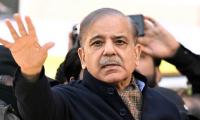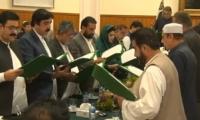The inauguration of the Kartarpur Corridor and the government’s announcement of plans to restore 400 Hindu temples across the country has received enormous attention in the media.
While most analysts have viewed these developments through the lens of India-Pakistan relations, it is also important to analyse if they signify a policy shift in Pakistan towards embracing the religious diversity that exists in the country. Religious minorities in Pakistan constitute 3.7 percent of the population. These are geographically dispersed, largely part of lower socio-economic strata of society and have limited electoral/political significance. There have been serious concerns about their security due to sporadic incidents of forced conversions, disproportional number of cases under blasphemy laws and mob attacks.
The unprecedented wave of violence seen in the country during the last two decades has not just affected the minorities. There has hardly been any section of society that was spared the ordeal with estimated number of fatalities crossing 70,000. Overwhelmingly, both victims and perpetrators among these being Muslims.
The situation reached a point where children going to school had to be protected through raised walls, barbed wires, walk-through gates and snipers positioned on roof tops, turning schools into jails rather than educational institutions.
This appears to have prompted a rethink within policymaking circles. One of the underlying reasons identified for such levels of violence is the emergence of an exclusionary national identity that made being a Pakistani synonymous with being a Muslim. This not only rendered members of other communities (derogatorily termed ‘non-Muslims’) second-class citizens, but also raised a question of who is and isn’t a Muslim or a ‘good-enough’ Muslim.
In order to ensure greater national cohesion, therefore, it has become imperative to evolve a more pluralistic and inclusive national identity. One that acknowledges the existence and even the significance of the religious minorities living in the country, and underscores peaceful coexistence.
As articulated in the National Internal Security Policy (2018), such a national identity can be premised on the pluralistic interpretation of ‘Riasat-e-Madina’, egalitarian clauses of the constitution and inclusive statements in various speeches of Quaid-e-Azam. In a major departure from the past therefore, there is increasing consensus on re-modelling Pakistan as a modern, Islamic, welfare state that was created to protect the rights of a minority (Muslims) and has an obligation to ensure that its own minorities can live in peace.
This is evident from the protection accorded to the Katas Raj temple complex in a Supreme Court judgement last year, the Aasia Bibi case, the bronze statue of Ranjit Singh in Lahore, and the Kartarpur corridor among others.
Let’s make no mistake however. The divisive ideologies based on hate and prejudice have proven to be potent mobilisers of people and resources. The social forces that benefit from such strands of politics are unlikely to give way without a fight.
Therefore, much needs to be done beyond the symbolism of the measures mentioned above. Even for the best of ideas to take root, they must be perceived as beneficial by the dominant social forces in a society. This involves not just an ideological question, but their potential impact on the accumulation and distribution of resources as well.
This is where the Kartarpur initiative presents a unique model compared to mere symbolic gestures. The potential influx of thousands of visitors through this initiative is expected to generate revenue and bring considerable foreign exchange. This provides an economic incentive to the elites at a time when the economy desperately needs some good news.
Second, given FATF proceedings and the general negative perception about Pakistan globally, there is a dire need for image correction. What better way than to open the doors for a religious community with a large and influential diaspora in the Western countries that can serve as a potential ambassador for the country?
Lastly, given the precarious communal relations in India in the wake of the rise of the RSS, creating goodwill for Pakistan within minorities other than Muslims also provides a cause to the ultra nationalist elements within the power elites to back the initiative.
For the broader policy shift to go beyond lip service and symbolic measures, therefore, a much stronger case quantifying and highlighting the vital contribution being made by the minority communities in the social and economic spheres needs to be made. This must be complemented with affirmative action focused on increasing educational, employment and entrepreneurial opportunities for the minorities. Correcting their portrayal in the national curriculum and ensuring at least proportional representation in state institutions can be a first step in this regard.
Finally, such a process must not be limited to religious minorities, but should also include ethnic minorities. The state has made some strides towards balancing the ethnic equation in the form of the 18th Amendment. Despite some genuine concerns, progress in this direction must be supported to ensure a pluralistic and inclusive Pakistan.
The country is looking up to the national leadership for an enlightened vision on the question of accepting diversity at this critical junction.
The writer is a political analyst based in Islamabad.
Email: dr.adnanrafiq@outook.com
A woman walks past a building of the International Monetary Fund. — AFP/FileThe annual and spring meetings of the...
Late Benazir Bhutto's daughter Asifa Bhutto Zardari addresses the Christian community in Bihar Colony on January 23,...
Representational image. — PexelsWater is an important scarce natural resource that is required for several everyday...
Pakistani employees of online marketplace company Kaymu at work in Karachi. — AFP/FileThe true spirit of development...
India uses Afghanistan as a backstage area to carry out terrorist attacks against Pakistan
Another report by the Pakistan Institute of Peace Studies states that 78 per cent of attacks have been carried out by...







